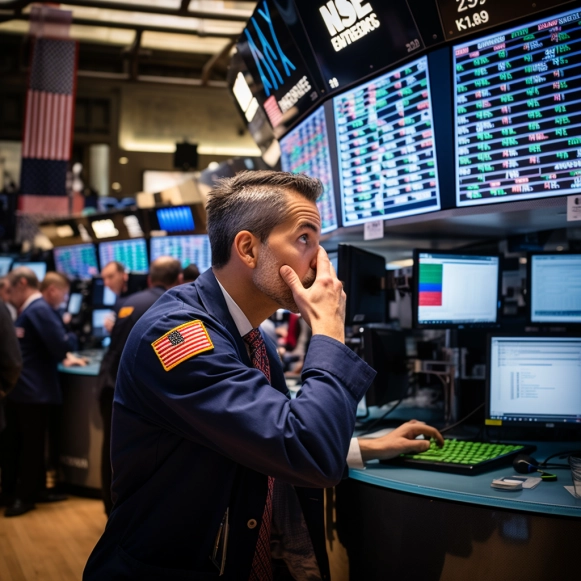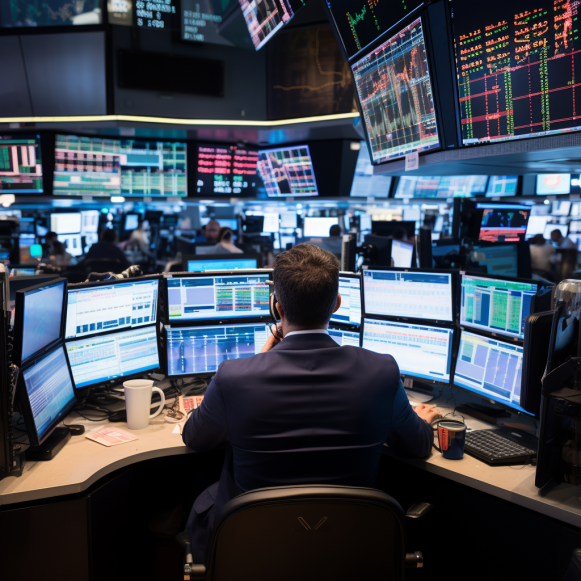A former Fed trader predicts mounting US debt will worsen the bond-market crash. He shares which Treasury duration investors should buy to eventually profit from rising prices.

Our investing experts respond to readers’ questions and write unbiased product reviews (here’s how we evaluate investing products). Paid non-client promotion: We may receive a commission from our partners in some cases. Our thoughts are always our own.
- Bond yields fell on Wednesday following Jerome Powell’s speech.
- However, according to Joseph Wang, US debt could cause yields to rise.
- Since 2008, the financial system has not been able to absorb additional debt, he claims.
Bond yields from one month to thirty years were all negative on Thursday as markets reacted to Fed Chairman Jerome Powell’s remarks.
The Fed extended its moratorium on interest-rate hikes, crushing expectations of higher rates and prompting investors to lock in higher yields while they can.
According to Joseph Wang, a former trader on the Fed’s Open Market Trading Desk, Powell’s speech was otherwise uneventful. Wang’s department was in charge of gathering market intelligence and carrying out the central bank’s monetary policies, such as quantitative easing and emergency lending facilities. During the March 2020 market crash, he was on the desk, executing repurchase operations and emergency lending to keep interest rates low.
“It was a very exciting place to be,” said Wang. “We were buying trillions of dollars in securities every month.” It had never been done on such a large scale before.”
He left before the central bank switched from monetary easing to tightening in 2021. He is now the principal at Fedguy.com, a research publication where he uses his knowledge of the Fed’s inner workings to assist investors in understanding monetary policy and how it affects the economy. In addition, he is the author of “Central Banking 101.”
“What I think is really interesting right now is that, over the past couple of years, the Fed has gradually been hiking rates, and they’ve been very open about staying higher for longer,” Wang told me. “The market fought the Fed for two years, and they didn’t believe it.” So, even when the Fed said it was going to raise rates significantly, the market was always pricing in rate cuts just around the corner. And that was the case until recently, when the market finally caught up with the Fed.”
Wang noted that the short-term interest rate futures market predicted that the Fed would cut rates sooner than it communicated throughout 2022 and into mid-2023. However, the futures market began to reflect the dot plot a few months ago, which shows that Fed officials expect the fed funds rate to remain elevated, between 4.6% and 5.4% in 2024. On Wednesday, they kept it in the 5.25-5% range.
While Treasury yields have been falling all week, Wang believes this is only a short-term reaction. Because the Treasury is issuing a lot of debt and there is a huge fiscal deficit, the 10-year yield will continue to rise over the next few years. He expects this to have a slowing effect on the economy, which means the Fed will no longer need to keep rates high and will instead begin cutting them sooner than the market anticipates, sometime around March 2024.
“The market is not pricing that in because the market has been wrong for such a long time that they now believe the Fed too much,” Wang said in a statement.
The point of no return
Bond yields are ultimately determined by supply and demand.
Previously, if Treasury yields suddenly spiked, banks could step in and buy the bonds. He claims that they no longer have the same level of flexibility.
Since the 2008 financial crisis, bank leverage ratio rules have changed, making them much less flexible in what they can buy. They have requirements for how much capital they must hold, which limits their ability to act as market makers in the Treasury market.
He expects the 10-year to hit new highs this year, having topped 5% in October for the first time since 2007. However, over the next five years, yields could easily rise above 6% to an unsustainable level, prompting the Fed to intervene and set it at around 6%.
“I think what will happen is one day the market will have some kind of market crash, like the UK Gilt market crashed,” Wang said in an interview. “The yields are going to spike really high, maybe 200, 300 basis points a day.” Bond prices fall as bond yields rise.
Wang also believes the Fed will implement yield curve control, which is when a central bank commits to purchasing a certain amount of bonds until yields reach a predetermined level.
Wang recommends that investors buy two-year notes because they are much more sensitive to potential Fed rate cuts, which would raise the price of those bonds.
“The shorter-dated tenures, within two years, are really sensitive to Fed actions,” Wang told Reuters. “When rates are cut, the two-year bond will rally, and the price will rise.” When you go further out the curve, say to the 10-year, the impact of rate hikes or cuts is less pronounced.”






